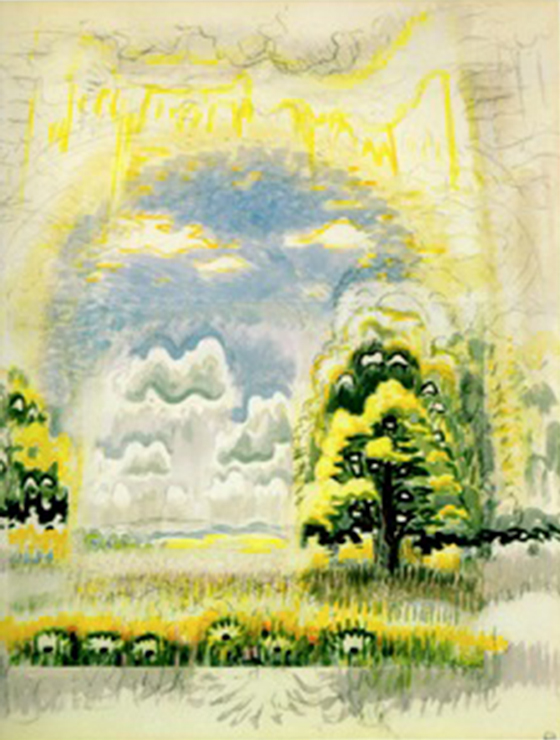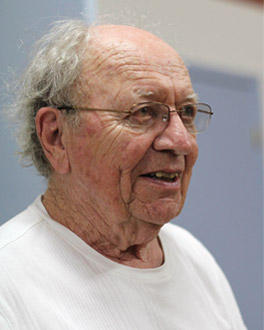Today while studying the “June Clouds” I suddenly saw the cobalt sky behind and above the clouds (in my inner eye) into a beautiful blue dome, with a huge cloud above it, from behind which gold yellow light poured downward on the earth below. And then came an old, old memory of how the dome of heaven seemed to me when I was a child, as something tangible, a dome indeed, behind which lived God, and His angels—-And I thought of the golden yellow Northwest of childhood, on a Sunday evening, a sacred promised land into which one could step from the edges of the rounded clouds. Charles E. Burchfield’s Journals, V.61B, June 18, 1963
 Charles Burchfield was in my view one of the most brilliant and visionary American landscape painters of the 20th century. He broke with the stereotypic manner of his time by transforming the farmland of central and northeastern rural fields and towns with a vision of energy rising out of the land itself. I am deeply influenced in my own landscape art by Burchfield’s way of working directly from the outer world but from a deeper place in (as he says) his inner eye.
Charles Burchfield was in my view one of the most brilliant and visionary American landscape painters of the 20th century. He broke with the stereotypic manner of his time by transforming the farmland of central and northeastern rural fields and towns with a vision of energy rising out of the land itself. I am deeply influenced in my own landscape art by Burchfield’s way of working directly from the outer world but from a deeper place in (as he says) his inner eye.
My own experience as a practicing painter doesn’t support some mystical source of a spontaneous ‘inner vision’ that some people suggest. What I do look for is signs of exposure to some earlier shared visual history. So it is useful to know that Burchfield’s first art studies were at the Cleveland Institute of Art, which was by coincidence a neighbor to the Cleveland Museum, one of the greatest collections of oriental art in America.
I have no doubt that such images left an early and indelible impression on Burchfield. The Chinese scroll paintings, especially the large calligraphic silk landscapes of the early Sung and Tang dynasties are often like one huge eco-system of energy, evoking scenes that suggest the movement of wind and air, fog and rain, mountains and roads quite distinct emotionally from the idyllic quiet of Poussin or Constable.
To my eye, Burchfield’s landscapes always have a feeling for the climate of the mid-west, like an unexpected sunny day of color explosions as in the painting shown here. As a child of the rural Midwest of that time myself (long before the mass housing after WW II) I so resonate with the range of his landscape vocabulary that includes a feeling for the frequent weather changes that rip through those flatlands with a ferocity and force–sometimes weeks of wind and storms that grind away on man’s little foothold of wooden houses, stony fields and muddy roads, to be followed by surprising moments of sunny glory.
His drawings and watercolor paintings are unique to me in how they capture the scale of nature’s power in our big country, a kind of ‘eco-spirit’ by which Burchfield transformed the run-down little American farm towns of the depression of the 30s and 40s into luminous exchanges of color and light, earth and sky.
For further reading, see Maciejunes, Nannette V. and Michael Hall, editors: The Paintings of Charles Burchfield, North by Midwest: Harry N. Abrams, Inc. 1997



